Denver, CO Pollen and Allergy Report for Summer 2023
Pollen Allergy Trends in Denver, CO
When is pollen lowest in Denver, CO?

February
Lowest month total PPM
Avg. PPM
When is pollen highest in Denver, CO?

March
Highest month total PPM
Avg. PPM
How does pollen in Denver, CO compare to Colorado?
Denver has a higher average PPM than the state of Colorado.
Denver yearly avg PPM:
Colorado yearly avg PPM:
How does pollen in Denver, CO compare to the USA?
Denver has a lower average PPM than the USA.
Denver yearly avg PPM:
USA yearly avg PPM:
Is pollen worse this year in Denver, CO?
Spring 2023 was worse than spring 2022.
Spring 2023 PPM:
Spring 2022 PPM:
Average PPM in Denver, CO
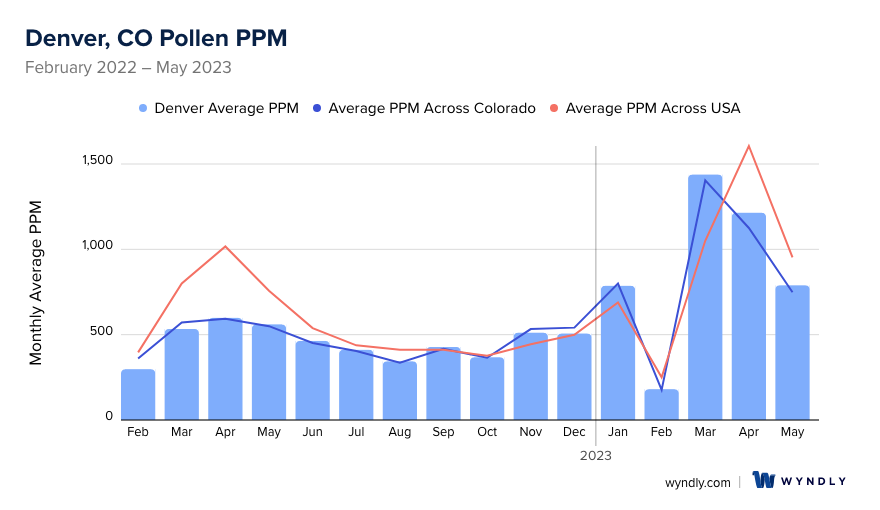
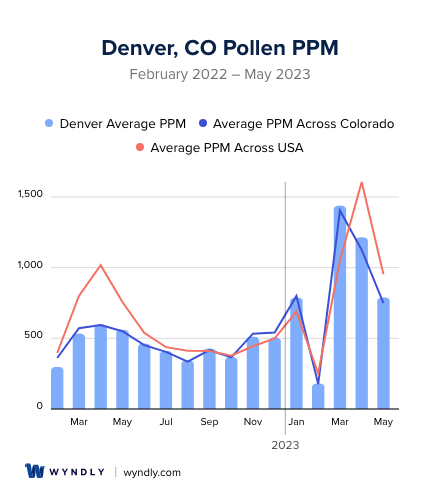
Denver, CO Pollen and Allergy Breakdown by Month
Grass
When is grass pollen highest in Denver, CO?
April has the highest grass pollen in Denver, CO with an average PPM of
When is grass pollen lowest in Denver, CO?
December has the lowest grass pollen in Denver, CO with an average PPM of
Tree
When is tree pollen highest in Denver, CO?
March has the highest tree pollen in Denver, CO with an average PPM of
When is tree pollen lowest in Denver, CO?
September has the lowest tree pollen in Denver, CO with an average PPM of
Weed
When is weed pollen highest in Denver, CO?
November has the highest weed pollen in Denver, CO with an average PPM of
When is weed pollen lowest in Denver, CO?
February has the lowest weed pollen in Denver, CO with an average PPM of
Denver, CO Pollen Monthly Breakdown by Pollen Type
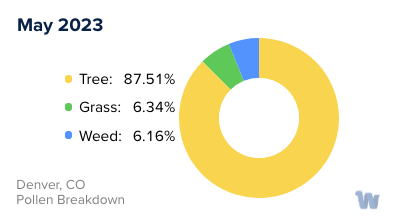
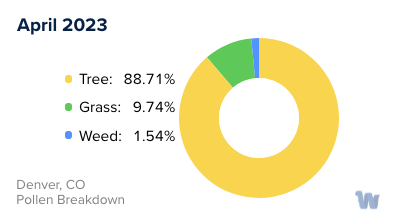
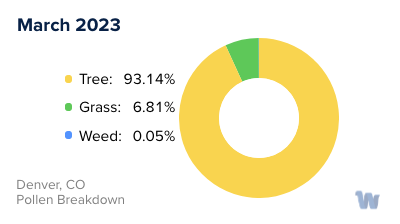
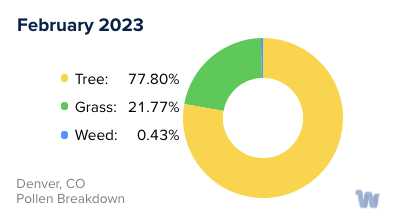
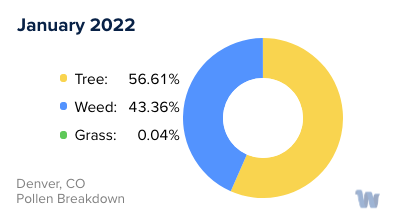
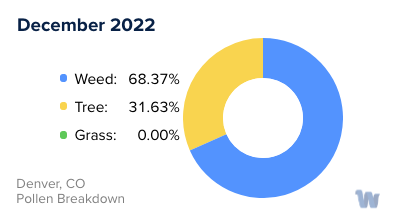
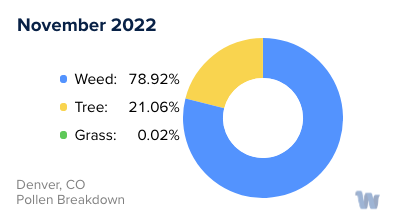
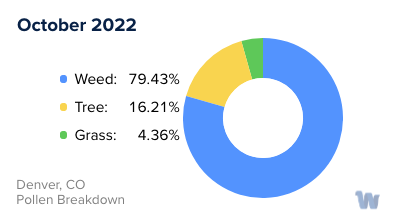
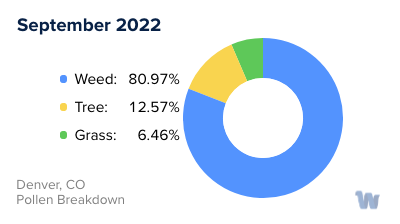
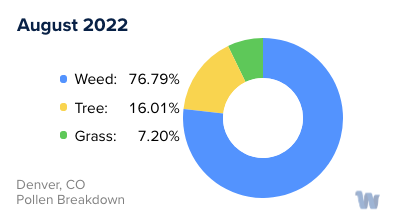
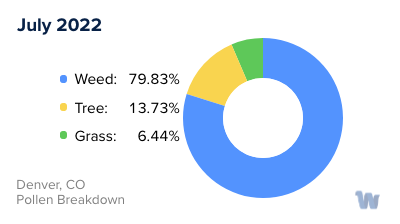
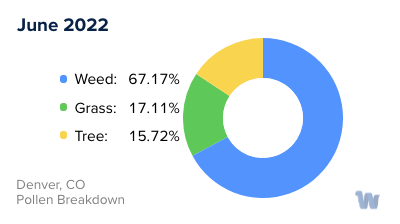
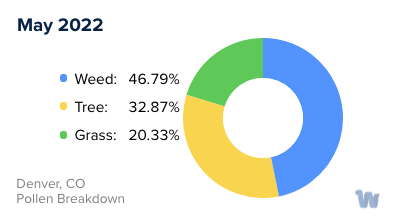
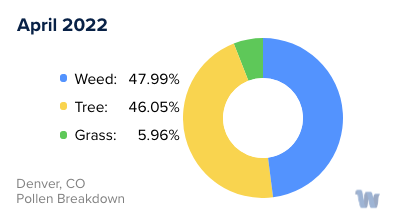
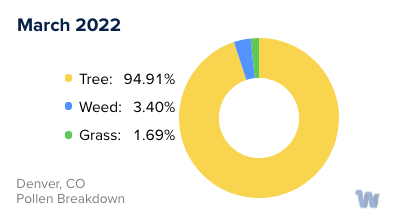
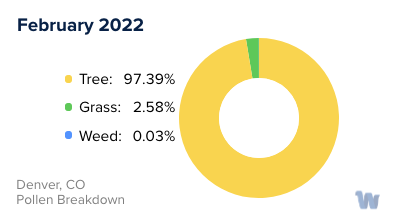
Pollen and Hay Fever in Denver, CO
Nestled against the breathtaking backdrop of the Rocky Mountains, Denver, Colorado, is a city that offers residents and visitors alike an abundance of outdoor activities and natural beauty. But for those susceptible to pollen allergies, Denver's unique geography and climate can present certain challenges, particularly when it comes to hay fever.
In Denver, there are three primary types of pollen that individuals may be sensitive to: tree, grass, and weed pollen. Each has its own distinct season, meaning that depending on your specific allergy, you may experience symptoms at different times throughout the year.
Tree pollen is typically the first to appear, with the season starting as early as late winter and peaking in the spring. Common trees in Denver that produce allergenic pollen include oak, ash, and cottonwood. The majestic beauty of these trees is a characteristic feature of Denver's landscape, but their prolific pollen production can trigger allergic reactions in susceptible individuals.
As spring turns to summer, the grass pollen season begins. This type of pollen is typically at its highest levels in late spring and early summer. The Front Range is home to several types of grasses that can contribute to hay fever, including Kentucky bluegrass, ryegrass, and Timothy grass.
Lastly, as summer turns to fall, weed pollen comes into play. This is the final major allergen season of the year and can last until the first frost. In Denver, the most common weed allergens are ragweed and sagebrush.
In summary, Denver's beautiful and diverse flora contributes to a year-round pollen season. While this can present challenges for those with allergies, understanding when each type of pollen is most prevalent can help individuals prepare and manage their symptoms effectively. From the first tree pollens of spring to the last weed pollens of fall, it's important to know your allergens and when they're most likely to affect you. And remember, despite the pollen, Denver's natural beauty is well worth the occasional sneeze!.


